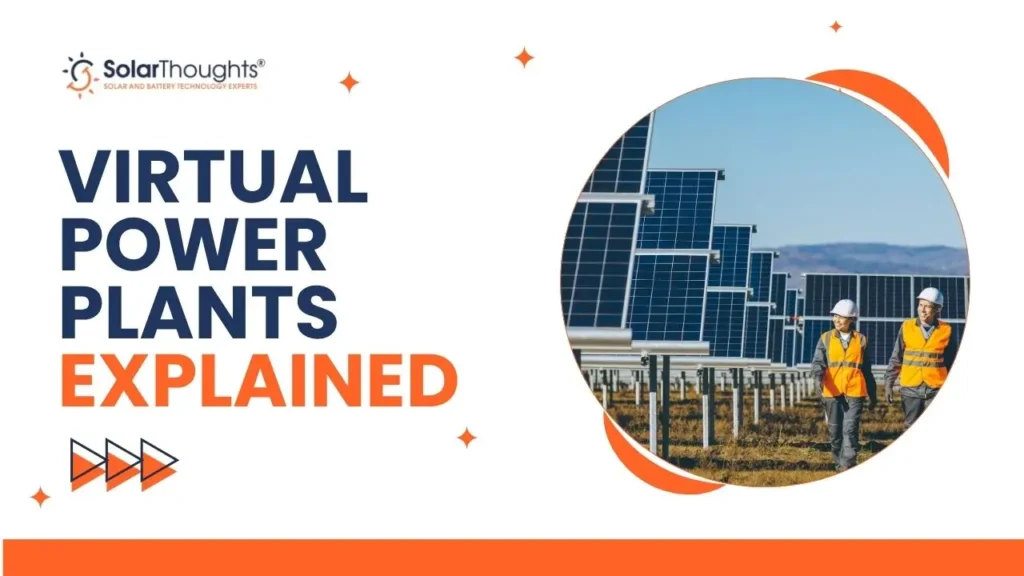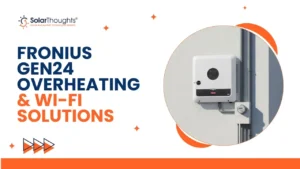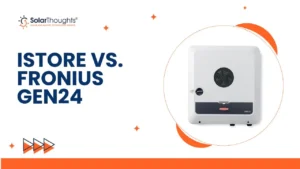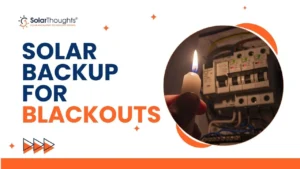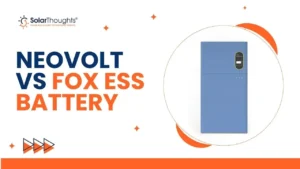Australian households with home batteries are earning between $300 and $800 each year through virtual power plants, and we believe this represents one of the most exciting opportunities in our country’s clean energy journey. At SolarThoughts®, we’re passionate about helping Brisbane homes and businesses understand how virtual power plants (VPPs) can turn your solar investment into ongoing income while supporting our national electricity grid.
Table of Contents
ToggleWe’re witnessing remarkable growth in Australian solar battery adoption, with over 73,000 systems now storing almost 1.1 GW of power—that’s more than eight times the capacity of the former Hazelwood power station. This expanding network of home energy systems creates the foundation for virtual power plants, which coordinate these individual resources to maintain grid stability during peak demand periods and extreme weather events.
Australia leads the world in rooftop solar adoption, with over 2.5 million systems generating more than 10 GW of clean energy across our communities. This impressive uptake creates ideal conditions for VPPs to thrive. With more than 700,000 Victorian households already using solar power, the potential for virtual power plant participation is substantial.
We believe virtual power plants represent a pivotal development in Australia’s energy future, particularly when you consider the Australian Energy Market Operator forecasts our country will need 15 GW of energy storage by the early 2040s. Whether you’re considering a battery system or already have one installed, understanding how VPPs work, their benefits, and participation options can help you maximize both your savings and your contribution to Australia’s clean energy transition.
What is a Virtual Power Plant (VPP) and How Does It Work?
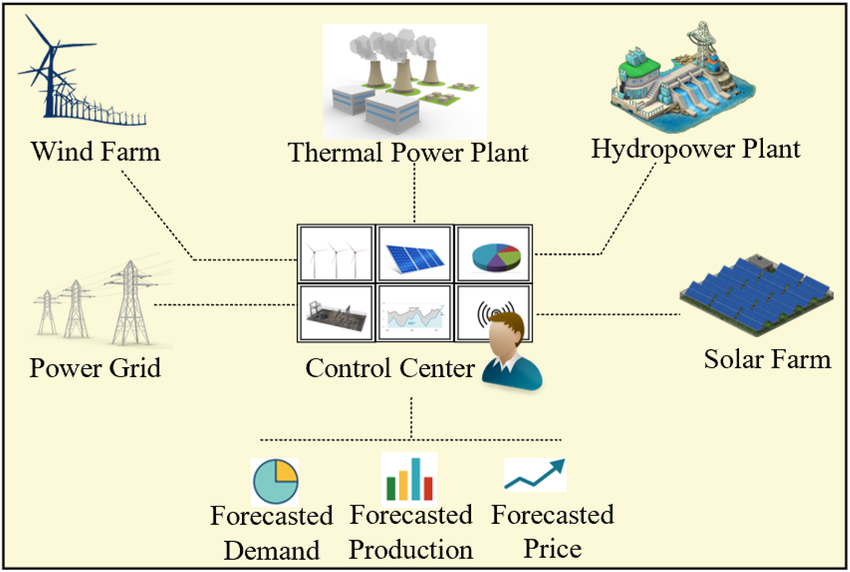
A virtual power plant isn’t a physical facility—it’s a sophisticated network of distributed energy resources working together as one powerful system. VPPs connect thousands of smaller energy assets across communities: rooftop solar systems, home batteries, electric vehicles, and smart appliances, all coordinated through a unified management platform.
Picture a VPP like an orchestra where each instrument represents an energy device, and a central conductor guides every performance. Advanced software and communication technologies—Wi-Fi, cellular networks, and smart meters—allow these individually small resources to work in harmony, delivering significant power to the grid when needed.
The technology adapts beautifully to real-time energy demands. During peak usage periods, the central control system instructs participating batteries to discharge stored power back to the grid. When renewable generation exceeds demand, those same batteries absorb and store the surplus energy. This two-way capability lets VPPs respond almost instantly to grid fluctuations—far faster than traditional power stations can manage.
VPPs coordinate various energy components:
- Home solar and battery systems
- Electric vehicles with vehicle-to-grid technology
- Smart thermostats and appliances
- Heat pumps and HVAC equipment
- Industrial mechanical equipment
VPPs deliver the same essential services as conventional power plants through intelligent coordination. Aggregating thousands of individual systems, they provide frequency control, voltage stability, and network support services that keep our electricity supply reliable. ActewAGL demonstrates this perfectly—they’ve deployed 51 Nissan Leaf EVs with vehicle-to-grid capability to provide frequency control services across the ACT.
The numbers tell a compelling story about VPPs’ economic value. With Australia needing 15 GW of energy storage by the early 2040s, and VPPs proving up to 60% more cost-effective than traditional peaker plants during high demand periods, they represent both smart technology and sound economics for our energy future.
Benefits of Joining a Virtual Power Plant in Australia
Virtual power plant participation delivers substantial advantages for Australian households with solar battery systems. The benefits reach far beyond your individual home to strengthen our entire energy network.
Battery owners participating in VPPs typically earn between AUD 458.70 and AUD 1,223.19 annually, with exact amounts depending on your battery size and location. Many VPP programs provide electricity bill discounts, direct credits for shared power, or upfront discounts on battery installation costs. Households with orchestrated batteries—those connected to VPPs—can expect annual savings of AUD 1,758.34-1,500 compared to AUD 1,376.09-1,000 with standalone systems.
Your battery investment pays back faster through VPP participation. What might otherwise take a decade to recoup becomes achievable in a much shorter timeframe. New South Wales participants receive upfront incentives between AUD 382.25 and AUD 611.60 simply for enrolling their battery, plus ongoing bill reductions averaging AUD 305.80–764.50 yearly.
Virtual power plants also deliver crucial grid stability and reliability improvements. These networks respond almost instantly to electricity supply and demand fluctuations, smoothing out grid variations during critical periods. This coordination reduces power disruptions and creates more reliable electricity supply, particularly during high-demand periods like sweltering summer days.
The environmental advantages are equally significant. Sharing your stored solar energy through VPPs reduces Australia’s reliance on coal and gas power, supporting our nation’s progress toward the 82% renewables target by 2030 and helping achieve emission reduction goals.
Community benefits extend to all electricity consumers. VPP participation helps lower wholesale prices and ancillary service costs, creating a more efficient energy system that benefits even non-participants through improved grid management and optimized energy distribution.
Most notably, virtual power plants achieve superior efficiency compared to traditional power stations by minimizing energy transfer losses. This creates a genuinely modern energy solution perfectly suited to Australia’s evolving electricity landscape.
Real-World VPP Programs and Participation Options
Australian energy retailers offer several established virtual power plant programs, each with distinct benefits and requirements. Here are the main options for homeowners ready to connect their batteries to a VPP.
AGL’s VPP program delivers up to AUD 428.12 in bill credits during your first 12 months, including a AUD 152.90 signup bonus and AUD 68.80 in quarterly credits. If you don’t already own a battery, AGL provides a AUD 1,528.99 discount when purchasing a solar bundle or battery through their program. Compatible systems include Tesla Powerwall, SolarEdge Energy Bank, and LG Home Battery with SolarEdge inverters.
Simply Energy’s VPP has proven successful, delivering 6 MW of residential energy storage through 1,200 Tesla Powerwall 2 batteries to Adelaide households. Participants achieved approximately 40% savings on battery costs and 20% reductions on electricity bills. The program now operates across Victoria, Queensland, and New South Wales.
Tesla’s Energy Plan provides AUD 336.38 in annual Grid Support Credits alongside competitive energy rates. You’ll need a Powerwall (excluding Powerwall 1), an operating solar system under 20 kW per Powerwall, a smart meter, and reliable internet connection. New Powerwall buyers receive an extended 15-year warranty when joining this VPP.
Amber Electric’s SmartShift program takes a different approach, passing 100% of wholesale market trading benefits directly to customers while charging only a fixed AUD 33.64 monthly subscription. This setup allows batteries to export electricity when wholesale prices spike above AUD 15.29 per kilowatt-hour.
Government incentives across Australia enhance VPP value further. NSW households receive between AUD 382.25 to AUD 611.60 for connecting batteries to VPPs, while the federal Cheaper Home Batteries Program (starting July 2025) will provide additional incentives.
AEMO research shows VPP participants join primarily to save money (42%), access government subsidies (19%), and secure backup energy supply (14%). Most users report high satisfaction levels, though ongoing communication about financial and environmental benefits helps maintain long-term participation.
Conclusion
Virtual power plants have created remarkable opportunities for Australian households to turn their solar investments into ongoing income streams while supporting our nation’s clean energy future. At SolarThoughts®, we believe this technology represents exactly the kind of smart, sustainable solution our communities deserve.
The evidence speaks clearly—battery owners participating in VPPs earn substantial annual returns while contributing to grid stability during the times it matters most. These financial benefits, combined with faster payback periods, make battery storage an increasingly attractive proposition for households considering their energy options.
Perhaps most importantly, VPPs demonstrate how individual actions can create collective impact. Each battery connected to a virtual power plant becomes part of Australia’s renewable energy infrastructure, helping us progress toward our sustainability goals while reducing costs for everyone. This distributed approach proves far more cost-effective than traditional power generation, creating benefits that extend well beyond participating households.
Participation options continue expanding across Australia, with major retailers offering diverse programs tailored to different needs and circumstances. Government incentives enhance these opportunities, particularly for households ready to make the switch to battery storage.
We’re witnessing the early stages of a fundamental shift in how Australians generate, store, and share energy. The growth from a handful of pioneering adopters to over 73,000 systems demonstrates the enthusiasm for this technology. With battery costs continuing to decrease and VPP benefits becoming more widely understood, this momentum will only accelerate.
Whether you’re considering your first solar installation or looking to add battery storage to your existing system, virtual power plants offer compelling reasons to take action. The benefits extend far beyond your electricity bills—you’re contributing to a more resilient, sustainable energy future for all Australians.
SolarThoughts® is here to guide you through these exciting possibilities, from initial consultation to ongoing support. Let’s brighten your future, one panel at a time.
FAQs
Q1. What exactly is a Virtual Power Plant (VPP)?
A Virtual Power Plant is a network of distributed energy resources, such as home solar panels, batteries, and smart appliances, that are coordinated through advanced software to function like a single power plant. It allows for better management of energy supply and demand across the grid.
Q2. How much can I earn by participating in a VPP in Australia?
Australian households participating in Virtual Power Plants typically earn between $300 and $800 per year. The exact amount depends on factors such as your battery size, location, and the specific VPP program you join.
Q3. Are there any drawbacks to joining a VPP?
While VPPs offer many benefits, some potential drawbacks include increased battery usage, which may affect its lifespan, and reduced control over your stored energy. However, most VPP programs are designed to balance these factors with the benefits they provide.
Q4. How do VPPs contribute to grid stability?
VPPs enhance grid stability by quickly responding to fluctuations in electricity supply and demand. They can discharge stored energy during peak times or absorb excess energy when supply is high, helping to smooth out variations and reduce the risk of blackouts.
Q5. What are the environmental benefits of Virtual Power Plants?
VPPs significantly contribute to environmental sustainability by reducing reliance on fossil fuel power plants. They optimize the use of renewable energy sources like solar, helping Australia progress towards its goal of 82% renewable energy by 2030 and supporting overall emission reduction efforts.
Our Popular Services
Top-rated solar panels company in Brisbane | Solar Panel Installation in Gold Coast | Upgrading existing Solar system | Solar Panel Repairs and Maintenance | Solar Panel Cleaning Service | Solar Battery Installations | Solar Inverter Installations

